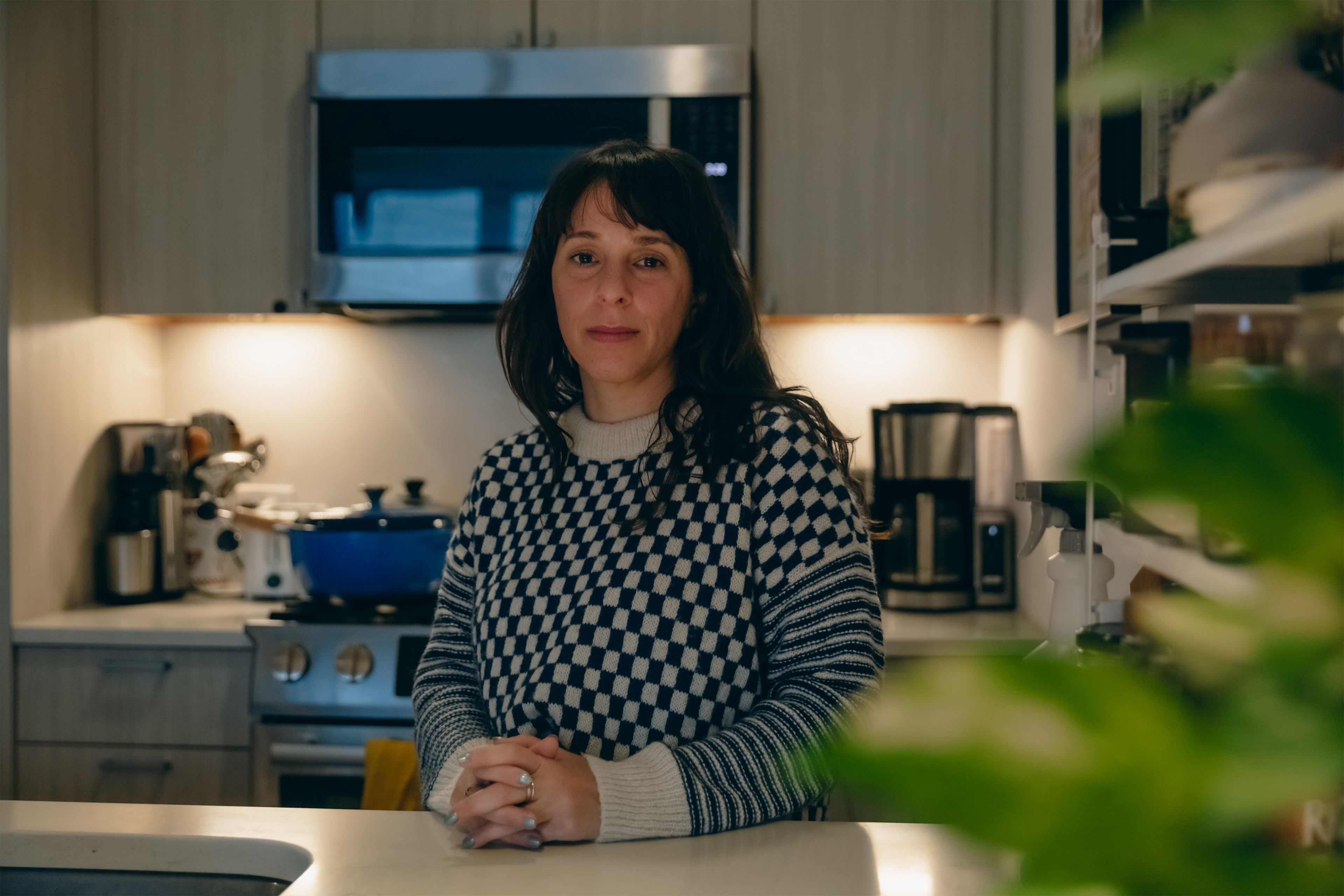When a Quick Telehealth Visit Yields Multiple Surprises Beyond a Big Bill
In September 2022, Elyse Greenblatt of Queens returned home from a trip to Rwanda with a rather unwelcome-back gift: persistent congestion.
She felt a pain in her sinuses and sought a quick resolution.
Covid-19 couldn’t be ruled out, so rather than risk passing on an unknown infection to others in a waiting room, the New Yorker booked a telehealth visit through her usual health system, Mount Sinai — a perennial on best-hospitals lists.
That proved an expensive decision. She remembers the visit as taking barely any time. The doctor decided it was likely a sinus infection, not covid, and prescribed her fluticasone, a nasal spray that relieves congestion, and an antibiotic, Keflex. (The Centers for Disease Control and Prevention says antibiotics “are not needed for many sinus infections, but your doctor can decide if you need” one.)
Then the bill came.
The Patient: Elyse Greenblatt, now 38, had insurance coverage through Empire BlueCross BlueShield, a New York-based insurer.
Medical Services: A telehealth urgent care visit through Mount Sinai’s personal record app. Greenblatt was connected with an urgent care doctor through the luck of the draw. She was diagnosed with sinusitis, prescribed an antibiotic and Flonase, and told to come back if there was no improvement.
All this meant a big bill. The insurer said the telehealth visit was deemed an out-of-network service — a charge Greenblatt said the digital service didn’t do a great job of warning her about. It came as a surprise. “In my mind, if all my doctors are ‘in-insurance,’ why would they pair me with someone who was ‘out-of-insurance’?” she asked. And the hospital system tried its best to make contesting the charge difficult, she said.
Service Provider: The doctor was affiliated with Mount Sinai’s health system, though where the bill came from was unclear: Was it from one of the system’s hospitals or another unit?
Total Bill: $660 for what was billed as a 45- to 59-minute visit. The insurer paid nothing, ruling it out of network.
What Gives: The bill was puzzling on multiple levels. Most notably: How could this be an out-of-network service? Generally, urgent care visits delivered via video are a competitive part of the health care economy, and they’re not typically terribly expensive.
Mount Sinai’s telehealth booking process is at pains to assure bookers they’re getting a low price. After receiving the bill, Greenblatt went back to the app to recreate her steps — and she took a screenshot of one particular part of the app: the details. She got an estimated wait time of 10 minutes, for a cost of $60. “Cost may be less based on insurance,” the app said; this information, Mount Sinai spokesperson Lucia Lee said, is “for the patient’s benefit,” and the “cost may differ depending on the patient’s insurance.”
A $60 fee would be in line with, if not a bit cheaper than, many other telehealth services. Doctor on Demand, for example, offers visits from a clinician for $79 for a 15-minute visit, assuming the customer’s insurance doesn’t cover it. Amazon’s new clinic service, offering telehealth care for a wide range of conditions, advertises that charges start at $30 for a sinus infection.
The Health Care Cost Institute, an organization that analyzes health care claims data, told KFF Health News its data shows an urgent care telehealth visit runs, on average, $120 in total costs — but only $14 in out-of-pocket charges.
So how did this visit end up costing astronomically so much more than the average? After all, one of the selling points of telemedicine is not only convenience but cost savings.
First, there was the length of the visit. The doctor’s bill described it as moderately lengthy. But Greenblatt recalled the visit as simple and straightforward; she described her symptoms and got an antibiotic prescription — not a moderately complex visit requiring the better part of an hour to resolve.
The choice of description is a somewhat wonky part of health care billing that plays a big part in how expensive care can get. The more complex the case, and the longer it takes to diagnose and treat, the more providers can charge patients and insurers.
Greenblatt’s doctor billed her at a moderate level of care — curious, given her memory of the visit as quick, almost perfunctory. “I think it was five minutes,” she recalled. “I said it was a sinus infection; she told me I was right. ‘Take some meds, you’ll be fine.’”
Ishani Ganguli, a doctor at Brigham and Women’s Hospital in Boston who studies telehealth, said she didn’t know the exact circumstances of care but was “a bit surprised that it was not billed at a lower level” if it was indeed a quick visit.
That leaves the out-of-network aspect of the bill, allowing the insurer to pay nothing for the care. (Stephanie DuBois, a spokesperson for Empire BlueCross BlueShield, Greenblatt’s insurer, said the payer covers virtual visits through two services, or through in-network doctors. The Mount Sinai doctor fit neither criteria.) Still, why did Mount Sinai, Greenblatt’s usual health care system, assign her an out-of-network doctor?
“If one gets their care from the Mount Sinai system and the care is within network, I don’t think it is reasonable for the patients to expect or understand that one of the Mount Sinai clinicians is suddenly going to be out of network,” said Ateev Mehrotra, a hospitalist and telehealth researcher at Beth Israel Deaconess Medical Center.
It struck the doctors specializing in telehealth research whom KFF Health News consulted as an unusual situation, especially since the doctor who provided the care was employed by the prestigious health system.
The doctor in question may have been in network for no insurers whatsoever: A review of the doctor’s Mount Sinai profile page — archived in November 2022 — does not list any accepted insurance. (That’s in contrast to other doctors in the system.)
Lee, Mount Sinai’s spokesperson, said the doctor did take at least some insurance. When asked about the doctor’s webpage not showing any accepted plans, she responded the site “instructs patients to contact her office for the most up-to-date information.”

Attempting to solve this billing puzzle turned into a major league headache for Greenblatt. Deepening the mystery: After calling Mount Sinai’s billing department, she was told the case had been routed to disputes and marked as “urgent.”
But the doctor’s office would seemingly not respond. “In most other professions, you can’t just ignore a message for a year,” she observed.
The bill would disappear on her patient portal, then come back again. Another call revealed a new twist: She was told by a staffer that she’d signed a form consenting to the out-of-network charge. But “when I asked to get a copy of the form I signed, she asked if she could fax it,” Greenblatt said. Greenblatt said no. The billing department then asked whether they could put the form in her patient portal, for which Greenblatt gave permission. No form materialized.
When KFF Health News asked Mount Sinai about the case in mid-October of this year, Lee, the system’s spokesperson, forwarded a copy of the three-page form — which Greenblatt didn’t remember signing. Lee said the forms are presented as part of the flow of the check-in process and “intended to be obvious to the patient as required by law.” Lee said on average, a patient signs two to four forms before checking into the visit.
But, according to the time stamp on the forms, Greenblatt’s visit concluded before she signed. Lee said it is “not standard” to sign forms after the visit has concluded, and said that once informed, patients “may contact the office and reschedule with an ‘in-network provider.’”
“If it was provided after the service was rendered, that is an exception and situational,” she concluded.
The business with the forms — their timing and their obviousness — is potentially a vital distinction. In December 2020, Congress enacted the No Surprises Act, designed to crack down on so-called surprise medical bills that arise when patients think their care is covered by insurance but actually isn’t. Allie Shalom, a lawyer with Foley & Lardner, said the law requires notice to be given to patients, and consent obtained in advance.
More from Bill of the Month
- Out for Blood? For Routine Lab Work, the Hospital Billed Her $2,400 Nov 21, 2023
- When That Supposedly Free Annual Physical Generates a Bill Oct 30, 2023
- She Received Chemo in Two States. Why Did It Cost So Much More in Alaska? Sep 29, 2023
But the legislation provides an exception. It applies only to hospitals, hospital outpatient facilities, critical access hospitals, and ambulatory surgery centers. Greenblatt’s medical bill variously presents her visit as “Office/Outpatient” or “Episodic Telehealth,” making it hard to “tell the exact entity that provided the services,” Shalom said.
That, in turn, makes its status under the No Surprises Act unclear. The rules apply when an out-of-network provider charges a patient for care received at an in-network facility. But Shalom couldn’t be sure what entity charged Greenblatt, and, therefore, whether that entity was in network.
As for Mount Sinai, Lee said asking for consent post-visit does not comply with the No Surprises Act, though she said the system needed more time to research whether Greenblatt was billed by the hospital or another entity.
The Resolution: Greenblatt’s bill is unpaid and unresolved.
The Takeaway: Unfortunately, patients need to be on guard to protect their wallets.
If you want to be a smart shopper, consider timing the length of your visit. The “Bill of the Month” team regularly receives submissions from patients who were billed for a visit significantly longer than what took place. You shouldn’t, for example, be charged for time sitting in a virtual waiting room.
Most important, even when you seek care at an in-network hospital, whose doctors are typically in network, always ask if a particular physician you’ve not seen before is in your network. Many practices and hospitals offer providers in both categories (even if that logically feels unfair to patients). Providers are supposed to inform you that the care being rendered is out of network. But that “informed consent” is often buried in a pile of consent forms that you auto-sign, in rapid fire. And the language is often a blanket statement, such as “I understand that some of my care may be provided by caregivers not in my insurance network” or “I agree to pay for services not covered by my insurance.”
To a patient trying to quickly book care, that may not feel like “informed consent” at all.
“It’s problematic to expect patients to read the fine print, especially when they feel unwell,” Ganguli said.

Bill of the Month is a crowdsourced investigation by KFF Health News and NPR that dissects and explains medical bills. Do you have an interesting medical bill you want to share with us? Tell us about it!
KFF Health News is a national newsroom that produces in-depth journalism about health issues and is one of the core operating programs at KFF—an independent source of health policy research, polling, and journalism. Learn more about KFF.
USE OUR CONTENT
This story can be republished for free (details).
from Insurance Archives - KFF Health News https://ift.tt/7hoKIJC
No comments